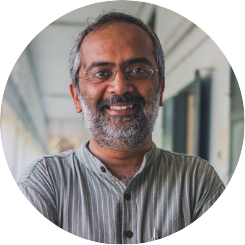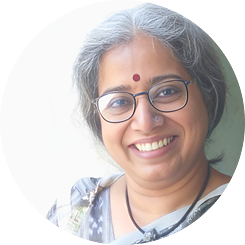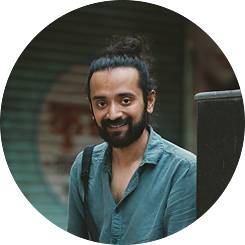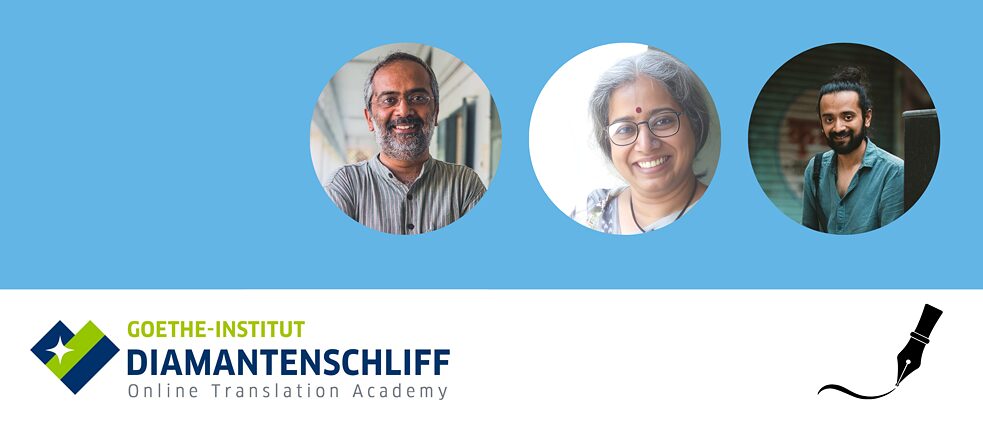Facilitators
Specialists who enriched and supported the Digital Translation Academy with their professional and technical expertise.
Milind Brahme
 © Milind Brahme
Dr. Milind Brahme is Associate Professor of German at the Department of Humanities and Social Sciences at Indian Institute of Technology Madras (IIT), Chennai and teaches German language and literature, literary theory and criticism. After his postgraduate degree programme in German Studies at the Jawaharlal Nehru University, New Delhi he completed his doctorate in 1997 focussing on Franz Kafka's works and their possible influence on the Indian writer G.A. Kukarni who wrote in Marathi. He is currently also involved in research initiatives in the field of Multi Grade / Multi Level Methodology and inclusive education at the Rishi Valley Education Centre in collaboration with the Institute of Special Education at the University of Würzburg.
© Milind Brahme
Dr. Milind Brahme is Associate Professor of German at the Department of Humanities and Social Sciences at Indian Institute of Technology Madras (IIT), Chennai and teaches German language and literature, literary theory and criticism. After his postgraduate degree programme in German Studies at the Jawaharlal Nehru University, New Delhi he completed his doctorate in 1997 focussing on Franz Kafka's works and their possible influence on the Indian writer G.A. Kukarni who wrote in Marathi. He is currently also involved in research initiatives in the field of Multi Grade / Multi Level Methodology and inclusive education at the Rishi Valley Education Centre in collaboration with the Institute of Special Education at the University of Würzburg.Dr. Milind Brahme acted as a respondent during the online lectures of the Digital Translation Academy and moderated the subsequent discussions with the participants. For the final phase of the Academy he not only curated the prose pieces and excerpts from Kafka's works to be translated, but also accompanied them with a lecture on Kafka's literary and linguistic peculiarities.
Gita Jayaraj
 © Gita Jayaraj
Gita Jayaraj is a PhD research scholar at the Department of Humanities and Social Sciences at the Indian Institute of Technology Madras in Chennai. She graduated with an MPhil from the Centre for Linguistics and English at the Jawaharlal Nehru University, New Delhi. She has worked extensively in the fields of academic publishing and technical documentation, including as registrar for the Asian College of Journalism. The independent researcher, editor and writer has a keen interest in rituals, theatre, society, culture and gender. Her writings have been published in various magazines.
© Gita Jayaraj
Gita Jayaraj is a PhD research scholar at the Department of Humanities and Social Sciences at the Indian Institute of Technology Madras in Chennai. She graduated with an MPhil from the Centre for Linguistics and English at the Jawaharlal Nehru University, New Delhi. She has worked extensively in the fields of academic publishing and technical documentation, including as registrar for the Asian College of Journalism. The independent researcher, editor and writer has a keen interest in rituals, theatre, society, culture and gender. Her writings have been published in various magazines.Under the Digital Translator Academy project Gita Jayaraj worked as a consultant and editor for the Kafa translations into Tamil. She also connected the project team to the Tamil voice artiste.
Tapan Pandit
 © Tapan Pandit
Photographer and film-maker Tapan Pandit is abased out of Pune. With a keen interest in the analogue medium and darkroom techniques, he has been part of several archiving and preservation projects over the past years. His current work of restoration, namely the digitisation of the works of photographer D. R. Mody, is soon to culminate in a book and an exhibition.
© Tapan Pandit
Photographer and film-maker Tapan Pandit is abased out of Pune. With a keen interest in the analogue medium and darkroom techniques, he has been part of several archiving and preservation projects over the past years. His current work of restoration, namely the digitisation of the works of photographer D. R. Mody, is soon to culminate in a book and an exhibition.Tapan Pandit lent his professional expertise to the Digital Translation Academy by editing and fine-tuning the video lectures and podcasts of the translated kafka texts. He also connected the team with voice artistes for the podcasts and guided the artistes in the technicalities of recording.
